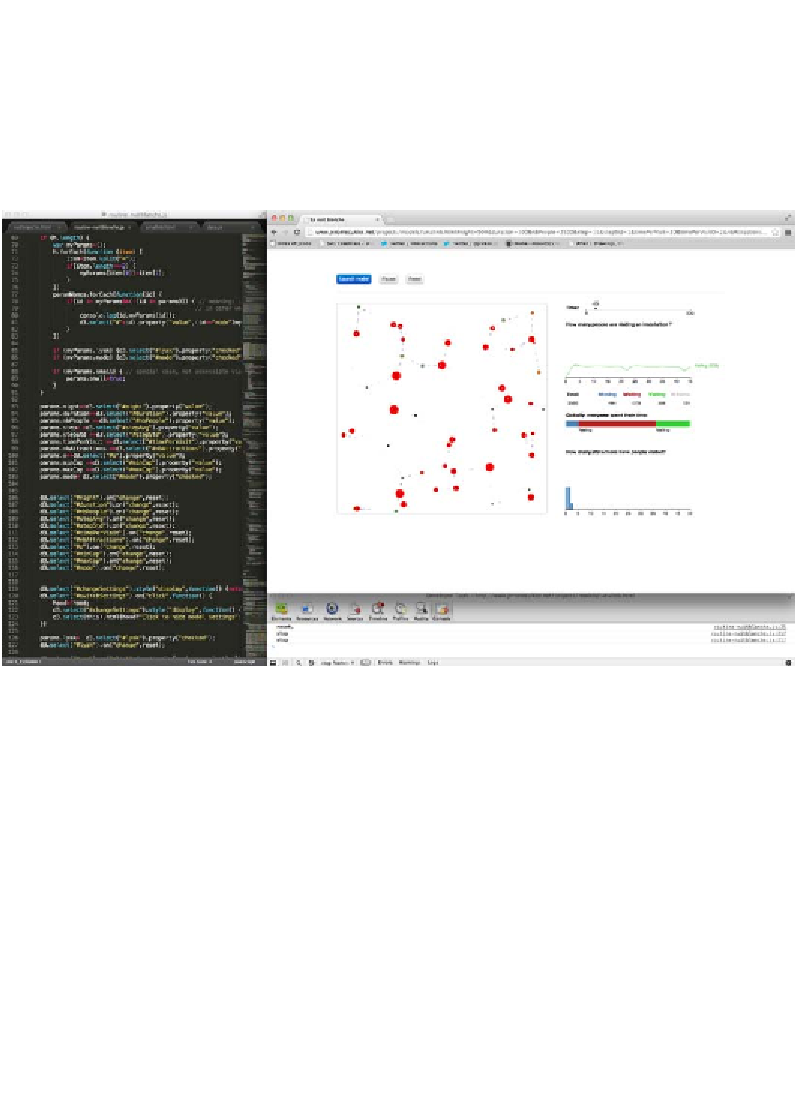Graphics Reference
In-Depth Information
D3 enables you to take full creative control over your entire visualization design
(all data representation and presentation features) to create incredibly smooth,
expressive, and immersive interactive visualizations. Mike Bostock, the key creative
force behind D3 and who now works at the New York Times, has an incredible
portfolio of examples (
http://bost.ocks.org/mike/
) and you should also take
a look at the work and tutorials provided by another D3 "hero", Scott Murray
(
http://alignedleft.com/
).
Sample screenshot of D3.js development environment
D3 and Flash are particularly popular (or have been popular, in the latter's case)
because they are suitable for creating interactive projects to work in the browser.
Over the past decade,
Processing
(
http://processing.org/
) has reigned as one
of the most important solutions for creating powerful, generative, and animated
visualizations that sit outside the browser, either as video, a separate application,
or an installation. As an open source language it has built a huge following of
creative programmers, designers, and artists look to optimize the potential of data
representation and expression. There is a large and dynamic community of experts,
authors, and tutorial writers that provide wonderful resources for anyone interested
in picking up capabilities in this environment.
There are countless additional JavaScript libraries and plugins that offer specialist
capability, such as
Paper.js
(
http://paperjs.org/
) and
Raphaël
(
http://
raphaeljs.com/
), to really maximize your programming opportunities.

Search WWH ::

Custom Search